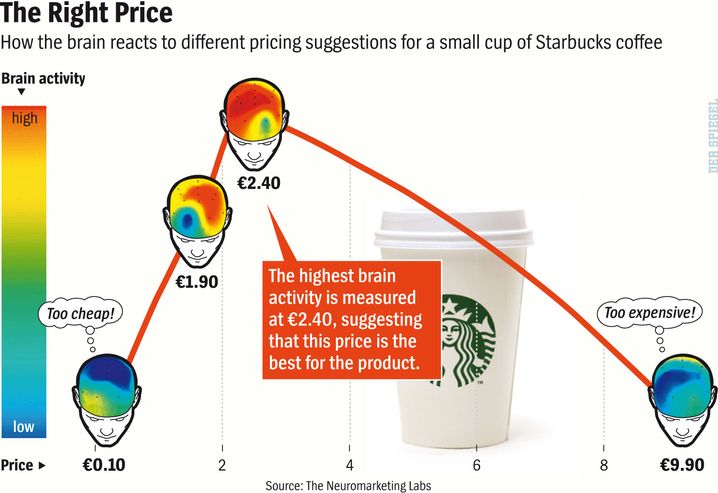That sweet spot for the pricing of your services may be higher than you think.
Is Starbucks charging too much? One market-researcher-turned-neuroscientist says the opposite is true. His studies – which measured EEG brainwave response to different pricing scenarios for a cup of coffee – showed that people were willing to pay more than the typical price for a cup of coffee at what is already a premium-price venue. This happens within milliseconds, as the brain has a built-in defense mechanism with “feelings of shock, doubt, and astonishment” when prices are too low or too high. This mechanism in our brain is automatic and adheres to proportionality independent of reason. The chart summarizes his finding that typical Starbucks pricing was roughly 30% below what consumers are willing to pay.

Indeed, the research led by Kai-Markus Müller found an ideal “sweet spot” price based on feelings as triggered by brain activity. His conclusion: Starbucks is leaving money on the table as consumers would be willing to pay even more than the premium they command. A quote from the article:
“Everyone thinks that they’ve truly figured out how to sell a relatively inexpensive product for a lot of money,” he says. “But the odd thing is that even this company doesn’t understand it.”
This piece of research is yet another study that supports the insight in my book that Price Influences Perception. Classic market research in pricing often fails, as consumers are notoriously bad at describing what they’d pay for something. This study reminds us that price and perception of quality are deeply linked within our brains. And it should remind you to look closely at your fees and assess if they truly represent the value offered at your practice.
